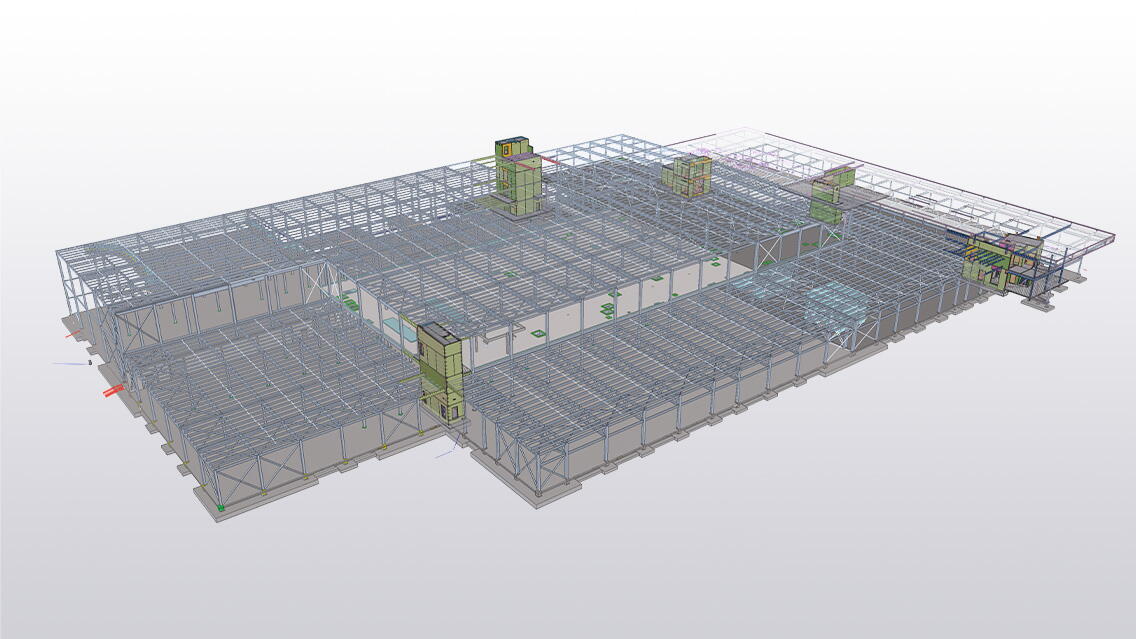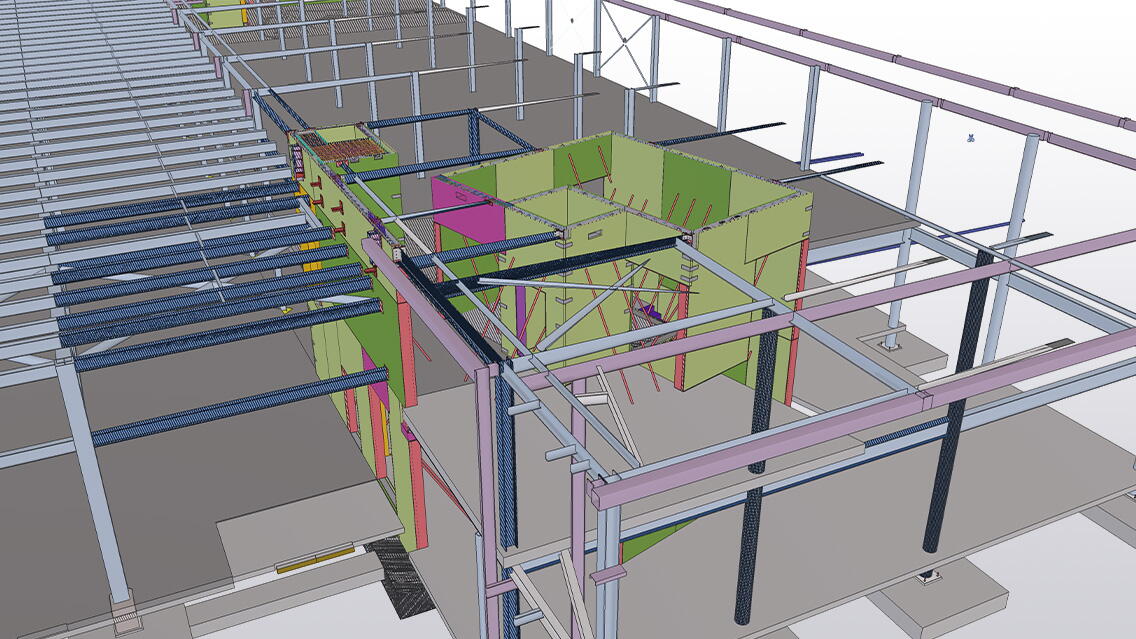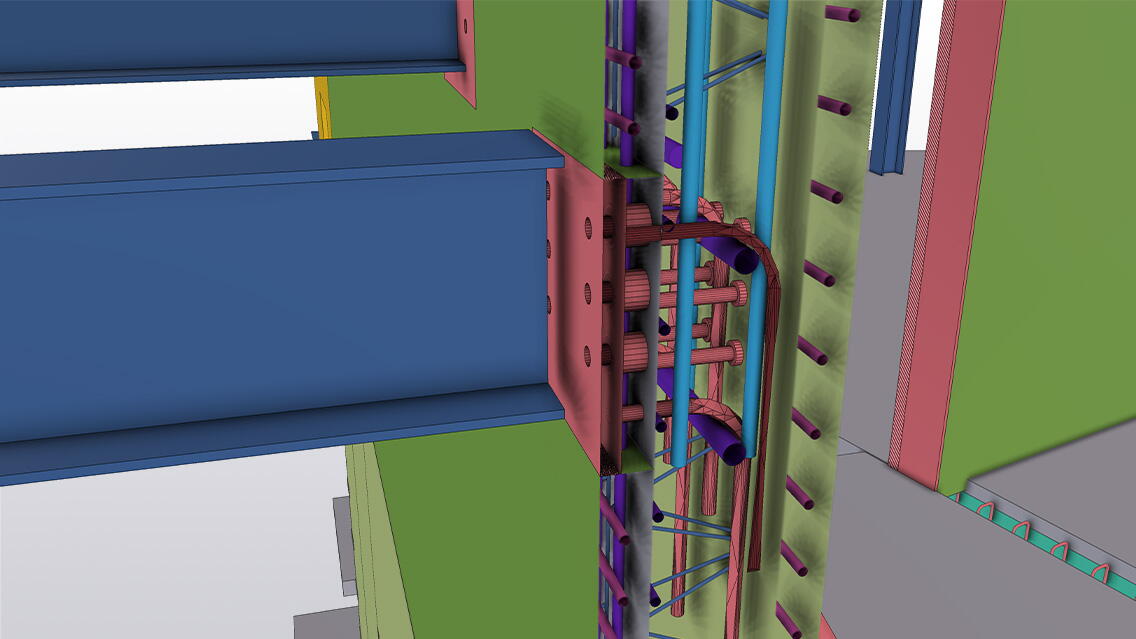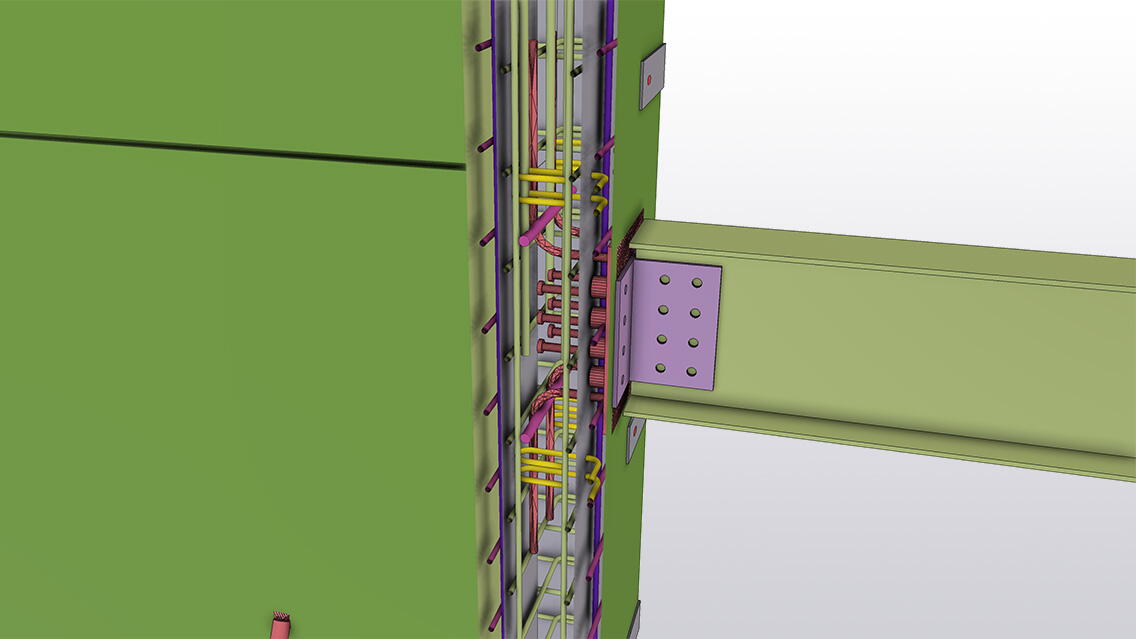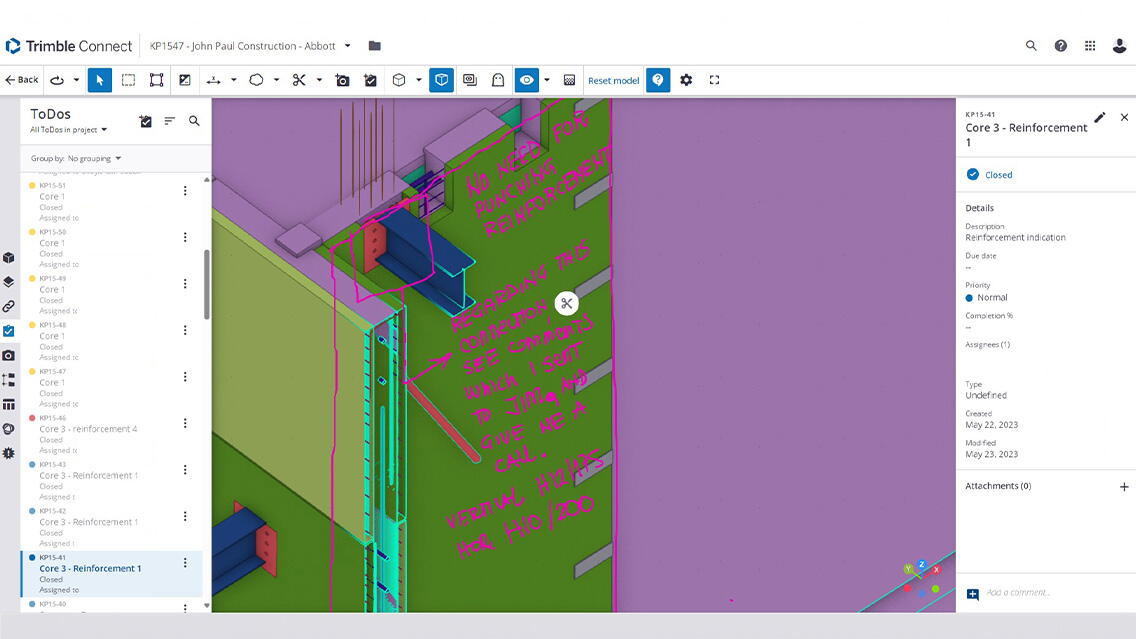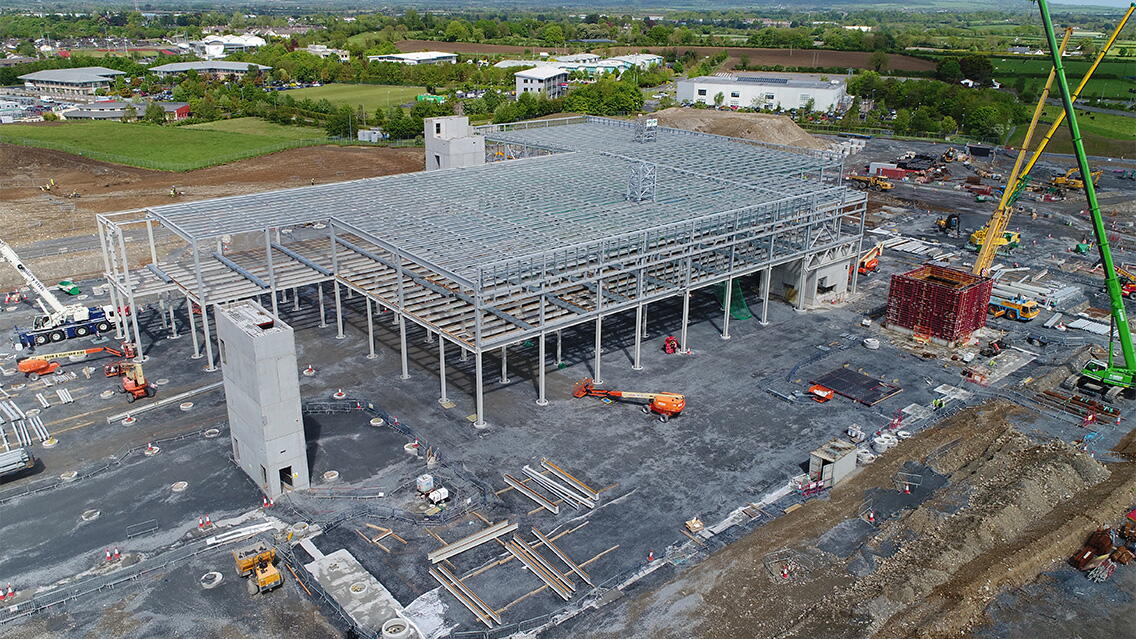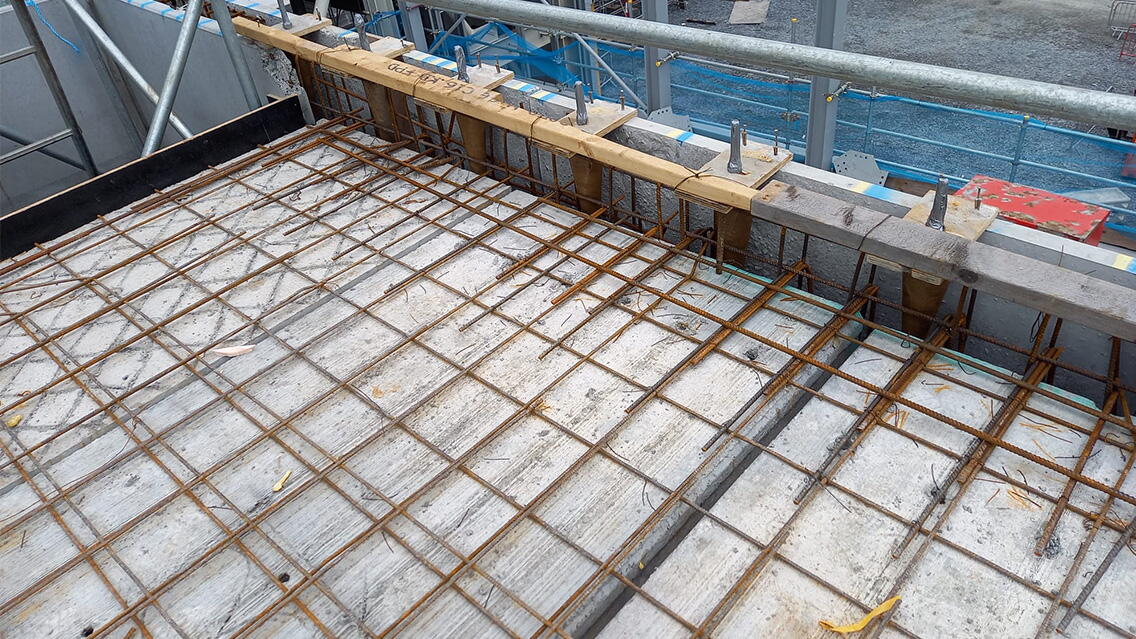The Abbot FreeStyle Libre project represents a new manufacturing facility for the pharmaceutical industry in Kilkenny, which will act as its global manufacturing centre for the FreeStyle Libre 3 Glucose Monitoring portfolio. The new factory will be the number one sensor-based glucose monitoring system in the world, having changed the lives of 4.5m people across more than 60 countries, by providing breakthrough technology that is accessible and affordable.
The project consists of a steel frame building superstructure with composite concrete floor plates, stabilised by 5 concrete cores over 3 levels.
Due to extremely onerous program constraints, a precast concrete solution for the cores was selected, and Kilsaran Precast was responsible for delivering the precast structure. The design and modelling of the cores was undertaken in Tekla Structures to meet the requirements and expectations of the architects, structural engineers, mechanical and electrical engineers, and the concrete frame contractor.
Kilsaran Precast manufactured all precast elements for this job using advanced manufacturing technology for twinwall and solidwall with one of the most advanced precast automotive plants in the world. Connections between the precast cores and steel superstructure, in addition to service integration and construction restraints, all presented challenges at the modelling stage.
Challenges and achievements
Throughout the project, Trimble Connect was used inside the Kilsaran Precast organisation for advanced collaboration; everyone involved in the project and manufacture could see all the latest updates, changes, reference models and production sheets in real-time. Trimble Connect is fully linked with Kilsaran Tekla models.
A major challenge for this project was the coordination, connection and installation of the precast structure, it had to allow for the connection of the steel structure and composite concrete floor plates, which would be installed following completion of the precast cores. To achieve this, the modelling was coordinated between the precast concrete engineer, the structural engineer, steel fabricator and construction manager utilising BIM collaboration. This was quite often an iterative process, using the precast Tekla Structures model and the design teams models to resolve issues and clashes posed by the design requirements and manufacturing processes.
Cast-in elements, as required by various members of the design team and the construction team for connection of steel structure and stability of the precast elements during erection, were modelled with the precast concrete elements in the Tekla model. This provided clear design intent and information for the design team to approve/comment on the design.
This project is one of the first of its kind with this level of complexity, where twin wall precast panels with full connection and integration of a steel frame superstructure, to be constructed in Ireland. The number of different items cast into the various concrete stages includes: steel plates, additional reinforcement, punching reinforcement and steel girders. The digital manufacturing information had to be exported to the automated robotic manufacturing plant without causing clashes or errors, thus avoiding potential impact on the production and unnecessary delays. The delivered documentation with the 3D BIM model allowed the Kilsaran Precast team to quickly check and avoid issues with potential clashes and limitations.
Using Tekla software
- SAA manufacture system (Unitechnik files), EBOS integrated software (PXML files) were exported both to other management software, and as production files to automated machinery.
- Reference models from the design team were shared in IFC, Revit formats.
- Kilsaran used double wall detail custom components, as well as their own.
- UDAs: attribute importer.
- General arrangement drawings including all connection details were efficiently produced from the 3D model.
- Site reinforcement drawings and schedules were efficiently produced from the 3D model.
- Production machine files (Unitechnik files) were automatically exported to the automatic manufacturing plant. This allowed the manufacturing plant to plot the elements, cut and place the reinforcement and place all cast-in items automatically, significantly reducing manufacturing times.
- Element shop drawings were automatically generated from the 3D model.
- Delivery and sequencing plans for logistic and site coordination.

